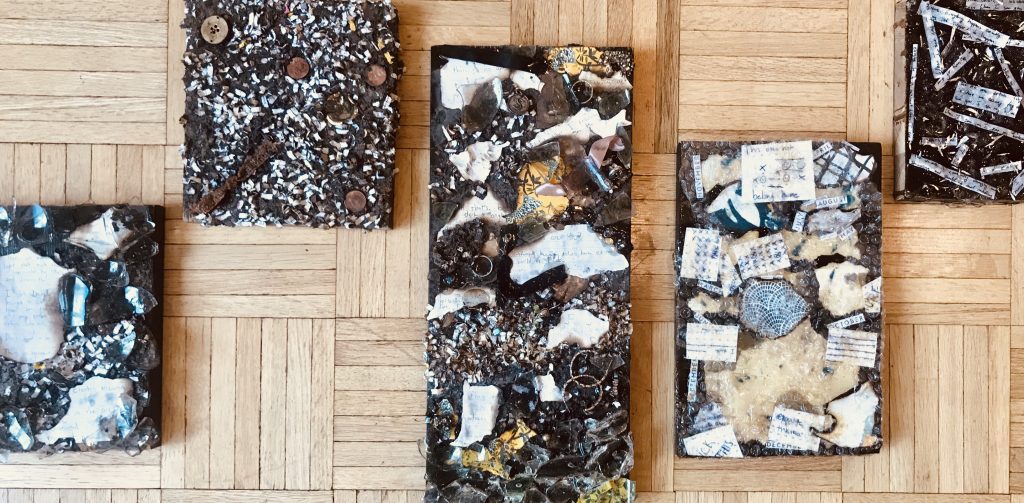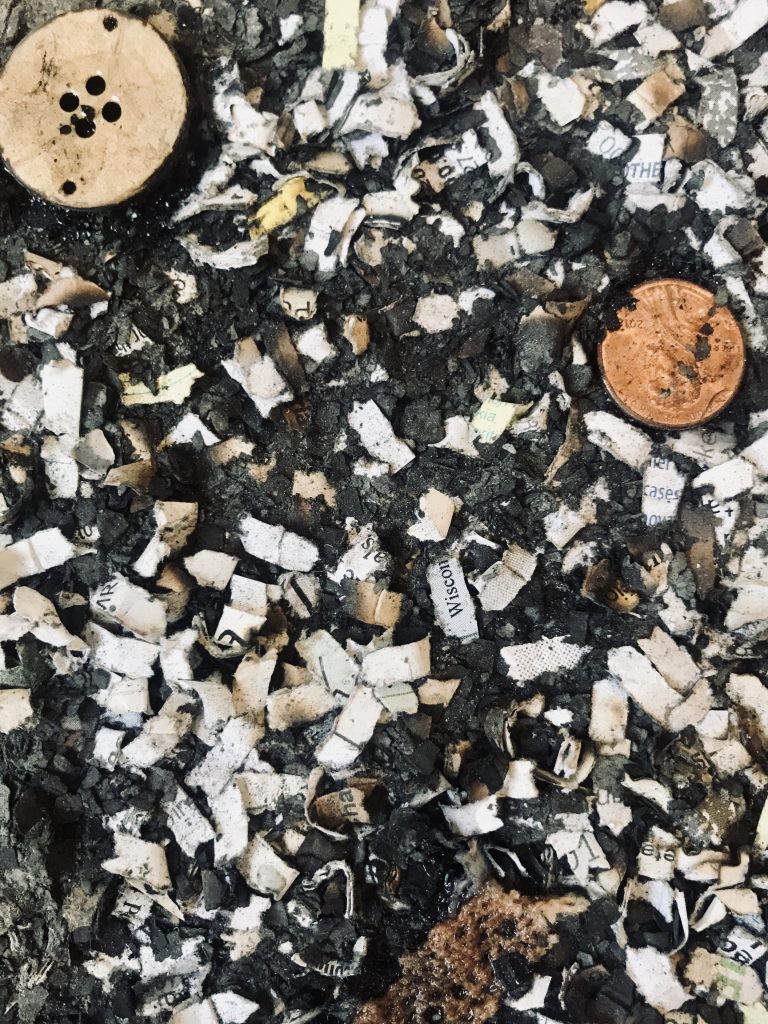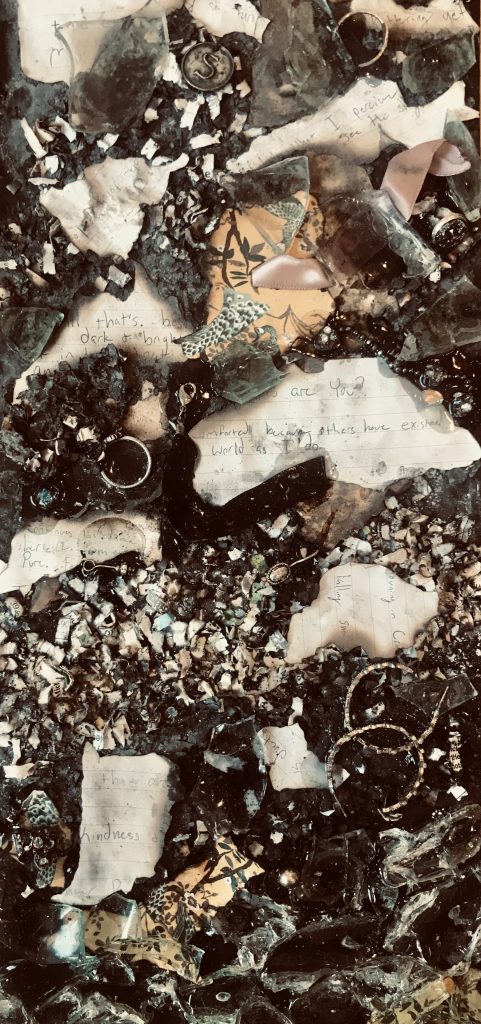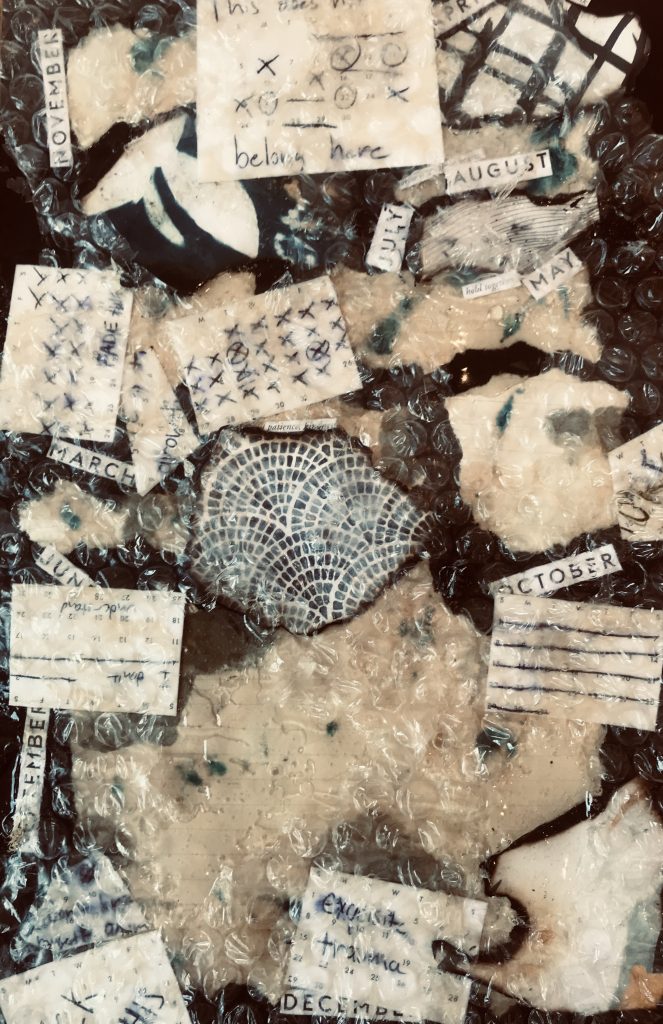
A series consisting of five pieces emerged from inspired explorations derivative of the course. Beginning with two boards sawed from a discarded futon, an old journal, paper scraps and glass bottles, I set out with an obsession to manipulate the materials in a way that could not be undone. The impermanence of the words I had written in my journal drove the initial stages of the pieces entitled Ashes and Felicity. I ripped pages out of the journal and shredded the paper scraps before setting it all ablaze. The ashes were scattered across the boards and the charred remains of my words were placed among them. My process continued by shattering the glass bottles I collected and adding the shards to the assemblage.

At this stage I was encouraged to expand my work into a series and give each board a specific time stamp. I came to the realization that my discarded items, salvaged from different periods of my life, told the story of a multifaceted being. David Hammons once said, “When you are always seen people get used to that and you aren’t a mystery anymore.” As a person who usually airs towards the light, I realized I was being gifted the experience to make peace with the dark and discover balance. The “art of discard” provided a catalyst to create honest expressions using the materials at hand.

The power saw reemerged and three more boards were cut from the futon. The board that would become Beau was submerged in shredded paper and ashes, and relics from my childhood were fastened among the ashes. Gradually, the narrative for Felicity became more apparent, and more discarded items found their way onto the board. Gone started as a love letter I wrote on scrap paper prior to treating it with dye and bleach. The letter was torn apart before being attached to the board. Remaining glass shards were glued to the final board (I See My Future) before it was smashed on concrete and hammered down.

Before Gone and I See My Future were completed, I departed from where I had been quarantined in Wisconsin for four months and returned to my apartment in Queens, New York. This brought a new collection of discarded items, and being in my safe space, my home, reminded me of how Thomas Lanigan-Schmidt created a haven of inspiration in his Hell’s Kitchen apartment. I asked my boyfriend to write anything he wanted on a scrap piece of paper and give it to me when we were finally in person again. He chose to write a love letter, and I immediately knew that I See My Future would be the final piece, and would represent a pure light. I cut up the letter and added flecks of tinfoil among the glass that was already on the board.

As I went to discard four months of calendars I had not used in my absence, I realized what Gone would become. I wrote on, discolored, tore and burned the calendars and scattered their remains over the pieces of the love letter glued on the board. A layer of bubble wrap was fastened over top. When dried, the bubble wrap was distressed and torn.

I must admit I am relieved the series ends with I See My Future, a piece that embodies connection, love, light and hope. There was something truly unhinging about putting the normally hidden darker parts of my soul unapologetically on full display. I was also pushed to come to the realization that words hold deep meaning for me, as the materials that contained written messages became the driving force of the series.